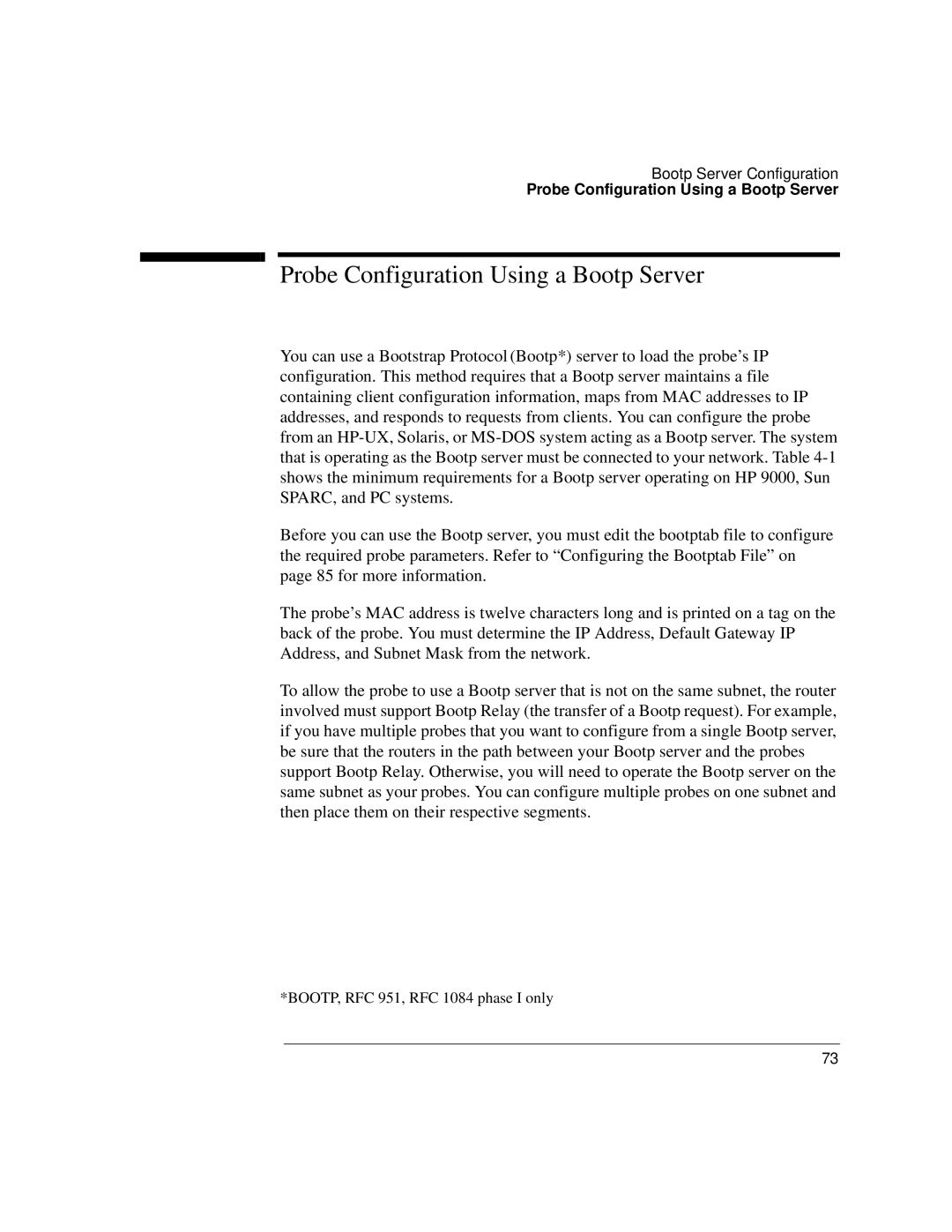
Bootp Server Configuration
Probe Configuration Using a Bootp Server
Probe Configuration Using a Bootp Server
You can use a Bootstrap Protocol (Bootp*) server to load the probe’s IP configuration. This method requires that a Bootp server maintains a file containing client configuration information, maps from MAC addresses to IP addresses, and responds to requests from clients. You can configure the probe from an
Before you can use the Bootp server, you must edit the bootptab file to configure the required probe parameters. Refer to “Configuring the Bootptab File” on page 85 for more information.
The probe’s MAC address is twelve characters long and is printed on a tag on the back of the probe. You must determine the IP Address, Default Gateway IP Address, and Subnet Mask from the network.
To allow the probe to use a Bootp server that is not on the same subnet, the router involved must support Bootp Relay (the transfer of a Bootp request). For example, if you have multiple probes that you want to configure from a single Bootp server, be sure that the routers in the path between your Bootp server and the probes support Bootp Relay. Otherwise, you will need to operate the Bootp server on the same subnet as your probes. You can configure multiple probes on one subnet and then place them on their respective segments.
*BOOTP, RFC 951, RFC 1084 phase I only
73
